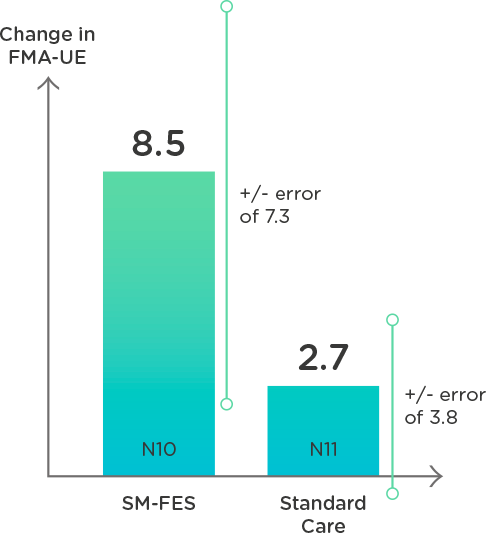
Increasing evidence suggests that pairing electrical stimulation with voluntary movement attempt and execution can promote motor recovery.
Self-modulated functional electrical stimulation implements this principle and provides the following benefits:
1. Directly contracts the stimulated muscles, inducing movement even in fully paretic patients.
2. Engages the patient in a voluntary effort to perform a goal-oriented task while delivering paired stimulation.
3. Provides strong afferent sensory feedback to the central nervous system.
Were clinical studies performed?
In a first pilot trial, a therapy based on Self-Modulated Functional Electrical Stimulation produced a significant reduction of impairment in severe, chronic stroke patients as compared to standard care (p < .05).
Patients displayed a 8.5 points average increase in the FMA-UE* scale after 10 sessions of a therapy based on SM-FES.
In addition, the combination of 10 sessions of standard care and 10 sessions of a therapy based on SM-FES promoted in 100% of the patients a clinically important recovery, with an average recovery of more than 12 points of FMA-UE.
* FMA-UE, Fugl Meyer Assessment of the Upper Extremity is a widely used measure used to assess the extent of an individual’s motor impairment. An increase of more than 5 points is considered as indicative of clinically important recovery.


